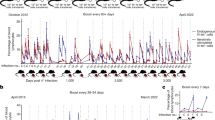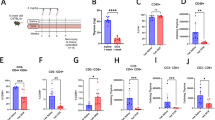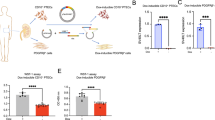Abstract
SV40 large T antigen, a viral oncoprotein, is known to immortalize human diploid fibroblast by soaking up cellular RB and p53, but its frequency is extremely low. Additional genetic alteration is necessary for single-step immortalization. We attempted to find out what this alteration is by overexpressing cellular signal mediator genes; c-myc and cyclin D frequently amplified in many cancer cells. Overexpression of cyclin D did not affect the immortalization, but, overexpression of c-myc along with T antigen could immortalize normal human diploid fibroblast. Several cellular markers tested during immortalization process showed that p21, a cyclin-dependent kinase inhibitor and a marker of cellular senescence, disappeared in the life span-extended cells by T antigen and in the immortalized cells by c-myc. p21 was, however, elevated in the senescent cells and in the cells of crisis. Interestingly, p16 was upregulated whenever T antigen is overexpressed. Telomerase activity was also activated only in the immortalized cells. These results suggest that overexpression of c-myc contributes to immortalization of human diploid fibroblast by activating telomerase activity and suppressing p21 activity.
Similar content being viewed by others
Article PDF
Author information
Authors and Affiliations
Rights and permissions
This is an Open Access article distributed under the terms of the Creative Commons Attribution Non-Commercial License (http://creativecommons.org/licenses/by-nc/3.0/) which permits unrestricted non-commercial use, distribution, and reproduction in any medium, provided the original work is properly cited.
About this article
Cite this article
Kim, HS., Shin, JY., Yun, JY. et al. Immortalization of human embryonic fibroblasts by overexpression of c-myc and simian virus 40 large T antigen. Exp Mol Med 33, 293–298 (2001). https://doi.org/10.1038/emm.2001.47
Published:
Issue date:
DOI: https://doi.org/10.1038/emm.2001.47
Keywords
This article is cited by
-
A prospect of cell immortalization combined with matrix microenvironmental optimization strategy for tissue engineering and regeneration
Cell & Bioscience (2019)
-
Establishment of an immortal cynomolgus macaque fibroblast cell line for propagation of cynomolgus macaque cytomegalovirus (CyCMV)
Archives of Virology (2013)
-
Telomerase activity in colorectal carcinoma and its correlation with expression of c-myc
Chinese Journal of Cancer Research (2005)



